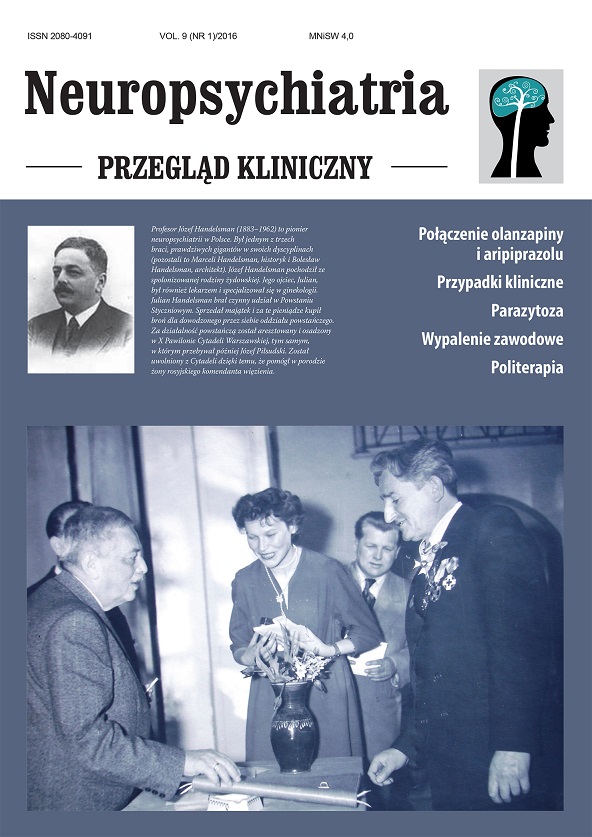Neuroleptyki: poprawiając ich skuteczność, redukując działania niepożądane. Seria przypadków. Część 1. Artykuł przeglądowy
##plugins.themes.bootstrap3.article.main##
Abstrakt
Leki przeciwpsychotyczne, które zostały wprowadzone w 1952 r., a ich atypowe postacie w 1988 r., charakteryzują się podstawowym bilansem skuteczności i bezpieczeństwa, który nazywany jest efektywnością. To właśnie efektywność decydujeo rezultatach terapii krótko- i długoterminowej. Rozpoczynając każdą terapię, stawiamy pytania o korzyści z zastosowania danego neuroleptyku. W rzeczywistości efektywność leku jest każdorazowo ustalana indywidualnie. Przedstawiamy serię przypadków pacjentów leczonych efektywnie różnymi lekami przeciwpsychotycznymi (olanzapiną, kwetiapiną, aripiprazolem). Główną ideą tej serii jest zobrazowanie, jak równoważenie skuteczności i tolerancji jest stale konieczne podczas całego procesu leczenia.
##plugins.themes.bootstrap3.article.details##

Utwór dostępny jest na licencji Creative Commons Uznanie autorstwa – Użycie niekomercyjne – Bez utworów zależnych 4.0 Międzynarodowe.
Copyright: © Medical Education sp. z o.o. License allowing third parties to copy and redistribute the material in any medium or format and to remix, transform, and build upon the material, provided the original work is properly cited and states its license.
Address reprint requests to: Medical Education, Marcin Kuźma (marcin.kuzma@mededu.pl)
Bibliografia
2. Henderson DC, Fan X, Copeland PM et al. Aripiprazole added to overweight and obese olanzapine-treated schizophrenia patients. J Clin Psychopharmacol 2009; 29(2): 165-169.
3. Tiihonen Suokas JT, Suvisaari JM et al. Polypharmacy with antipsychotics, antidepressants, or benzodiazepines and mortality in schizophrenia. Arch Gen Psych 2012; 69: 476-483.
4. Łoza B. Dwie doustne postacie kwetiapiny: tabletki o przedłużonym (XR) i natychmiastowym uwalnianiu (IR). Neuropsychiatria. Przegląd Kliniczny 2014; 6(2): 69-74.

